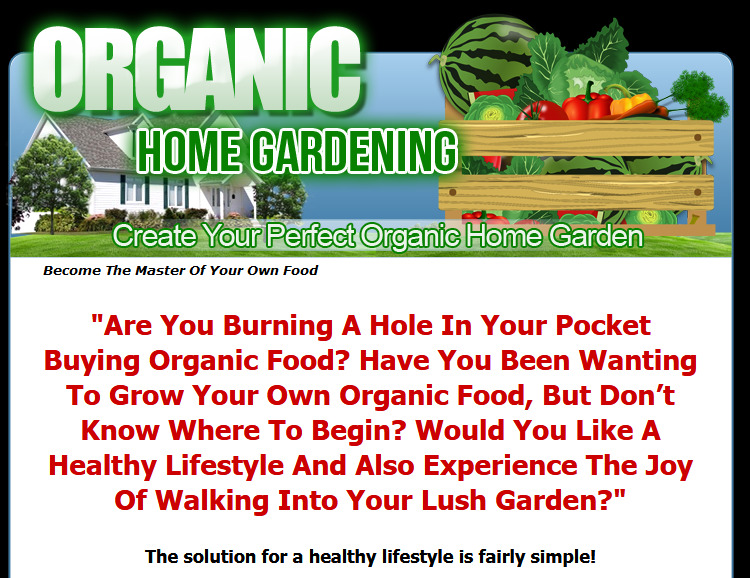Salespage Snapshot

Table of Contents
1. What is Organic Gardening?
2. Creating Productive Soil
3. Layout for a Productive Garden
4. Benefits of Organic Gardening
5. Square Foot Gardening
6. Synergistic Planting
7. Companion Planting
8. Vegan Gardening
9. Wildlife Gardening
10. Organic Gardening Maintenance
11. Pollination and Gardening
12. Beneficial Insects
13. Pest Control Naturally
14. Integrated Pest Management
15. Organic Pest Control Recipes
16. Composting and Natural Fertilizers
17. Managing Weeds
18. Seed Swapping
19. Sustainability and Your Organic Garden
Sample Content Preview
Chapter 3
Layout for a Productive Garden
When planning your organic garden there are many things you can do to produce the most yield. Many of these things are simple, although they do require some advance planning and generally, a little forethought when it comes to managing how the plants will work best depending on direction of sun, etc.
It is advisable to seek professional advice like for example a landscaper. Walk through the garden and ask advice to find out which areas in the garden are suitable for vegetables, flowers, herbs, trees etcetera. The other option that you can try before investing your money in a landscaper is to visit your local nursery. The staff will be able to give you valuable information on what plants flourish in the area and the seasons that are the most suitable for the different types of vegetables and plants.
Start planning the garden according to the data you gather along the way. Make sure the area you choose for the vegetable garden is not too big and easy to maintain. Also opt for pathways between the various types of vegetables to prevent people from harming the crops. Place sheets of plastic underneath the pathway to stop weeds from growing. Plant the taller crops at the back of the vegetable garden and the herbs in between the different types of vegetables If your space is limited use containers to plant your herbs and vegetables in. Remember that herbs act as a natural pesticide. It is wise to plant herbs throughout your garden. After you planned the layout of the organic garden walk through the garden again to make sure it is viable. Also be flexible some layouts look great on paper; but they are not practical. If you need more guidance use the Internet, garden magazines, public gardens and catalogs as a source to find layout concepts.
Chapter 4
Benefits of Organic Gardening
Not many people are aware that the benefits of organic gardening can improve their health, lifestyle and the environment. It is important that you understand what you can get out of the organic gardening process to reap the benefits.
• Growing your own vegetables can save you a lot of money. You can pick fresh vegetables from your own backyard. There is no need driving to the shop anymore, using fuel and money to buy lettuce, cucumber etcetera. Another plus is that due to the fact the herbs, fruit, vegetables are not treated with harmful chemicals it reduces diseases and increases mental and physical health.
• Organic foods vitamins and minerals content are higher than chemically treated foods. It gives the food extra flavor. Research indicates that all 21 nutrients show higher levels: Magnesium – 28% more; Vitamin C – 26% more; Iron – 20% more; phosphorous – 14% more.
• There is a reduction in water pollution, soil poisoning, death of insects and birds all due to the soil being organic. It restores the ecological system. Thus creating a healthy environment for all creatures. Organic gardening is labor intensive therefore you will release stress, lose weight and gain extra energy in a short period of time.
It is difficult to ignore the fact that organic is better. You need to realize that living an organic chemical free lifestyle can save and preserve the earth as well improve and extend your life. To become part of the green campaign is not that easy in the beginning; but when you start feeling healthier and get the original juicy taste of the organic fruits and vegetables there is no turning back.
Chapter 5
Square Foot Gardening
Square foot gardening is a new gardening method. Using this method can be highly effective when planting vegetables and herbs. If you want an easy and adaptable garden then square foot gardening is a great alternative to explore.
The garden layout is self explanatory. It is shaped in a square and depending on the size will determine the amount of plants that you are able to plant. Although you have a variety of size options you only require 62 to 64 square feet (6 to 8 sq meters) to feed a family of four.
Most square foot gardeners use raised beds. They place the beds in squares. On top of the beds a grid is placed to cordon off the squares. The beds are permanent fixtures raised above the ground. There is no digging involved. Make sure when you place the beds that the area gets a lot of sunshine. The soil mixture plays an important role. If you are not sure how to prepare the soil you are able to buy pre mixed organic soil. The soil consists out of 1/3 peat moss, 1/3 vermiculite and 1/3 compost.
Square foot gardening is an intensive gardening method that gives extraordinary results. Plant the vegetables, flowers and herbs in the squares. Keep the soil moist whilst the seeds start to grow. Do not let water drip on the plants itself to avoid plant diseases and fungus from growing. The moist soil needs to gradually dry. The best time to do this is during the day.
The nice thing about square foot gardening is that you do not need a big area to establish the garden. This makes the entire organic garden process fun for any person that does not have green fingers. Start off small and expand as you gain organic gardening knowledge and skill.
Chapter 6
Synergestic Planting
Synergistic planting is an organic gardening system established by Emelia Hazelip. The entire system evolves where plants naturally fertilize the soil without intervention. The synergistic agriculture principles are: No chemical treatments; usage of organic or chemical fertilizers; compacting soil or cultivation are allowed.
There are a few steps to consider when you do the layout for synergistic planting:
• Raised beds will prevent compacting of soil due to the fact they are never trend on as well as the covering mulch prevents the rain from forming a crust.
• Use biodegradable material to create a mulch cover for example cardboard. The mulch helps to get rid of the original vegetation. Remember if you plant in the spring it is important to open up the mulch so that soil can warm up.
• Do not only plant vegetables and herbs, plant a variety of flowers throughout the garden.
• After harvesting leave the parts of plant that is not being used in the ground. Plants need to finish their life-cycle to activate the synergistic process.
Synergistic gardening is a skill that you can only learn by trial and error. If you want the gardening method to work you need to gain knowledge by doing research on the matter. The main factor to keep in mind is that the entire process needs to be natural. Let nature take its course for example if you plant onions, leeks or garlic on the side of the garden beds. They act as pest controllers.
- 1 Ebook (PDF), 21 Pages
- 12 Graphics (JPG, PNG)
- 1 Salespage (HTML)
- 1 Squeeze Page (HTML)
- Year Released/Circulated: 2018
- File Size: 2,917 KB
License Details:
[ Yes ] Can sell the eBook to your customers.
[ Yes ] Can give away eBook (PDF Format).
[ Yes ] Can be used as a bonus (PDF Format).
[ Yes ] Can include eBook in membership site (PDF Format).
[ Yes ] Can be combined with other offers or sold as a package.
[ No ] Can include within website flips.
[ No ] Cannot sell Resell Rights to customers.
[ No ] Cannot sell Private Label Rights to customers.














